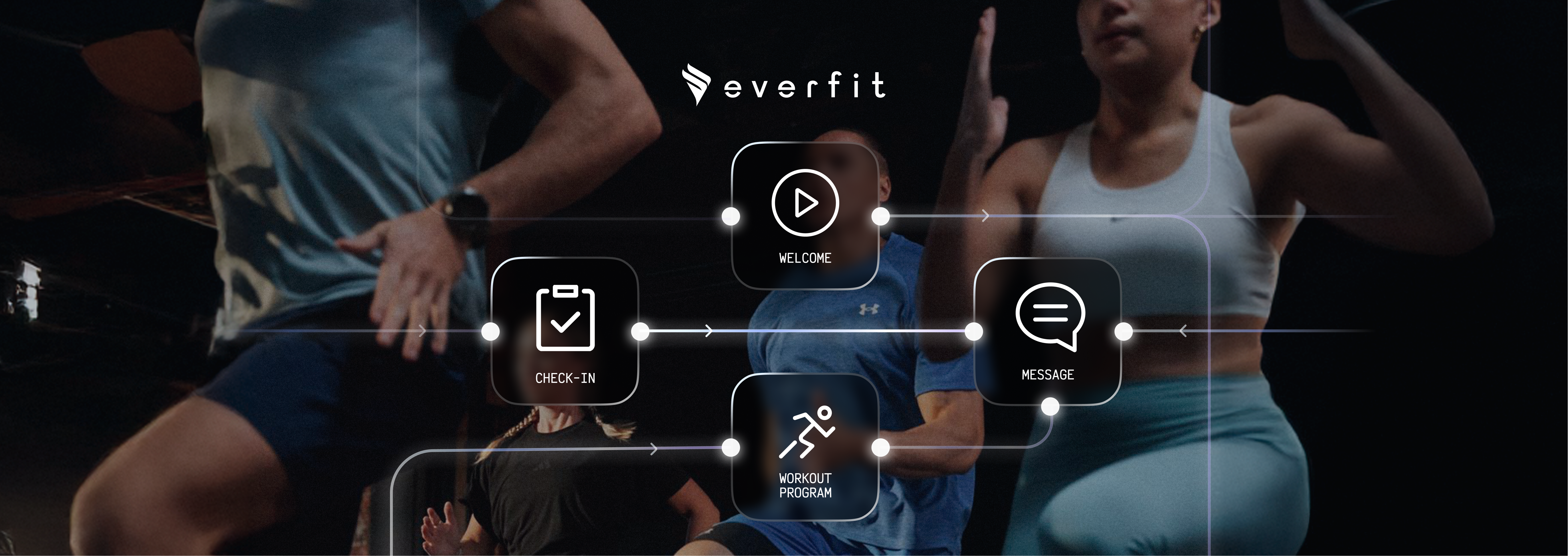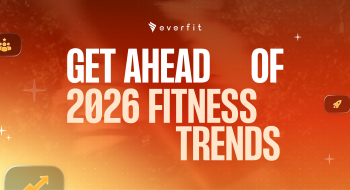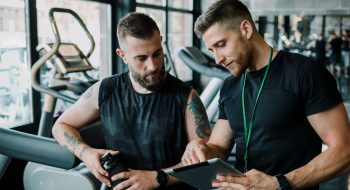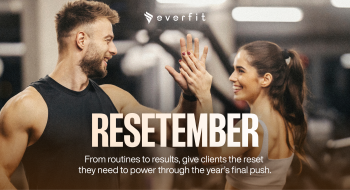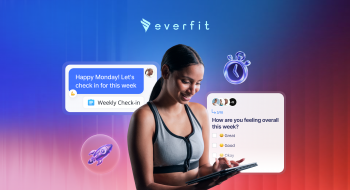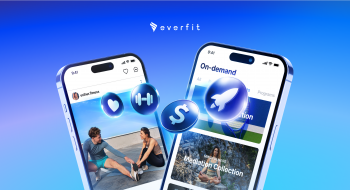Every minute spent manually following up, checking progress, or reminding clients is a minute taken away from what you do best, coaching!
That’s where automation comes in. With the right systems in place, you can streamline your admin work, deliver a seamless coaching experience, and keep your clients engaged and motivated without burning yourself out.
Jump to these sections if you need a quick read!
- Must-have automations for personal training, from Onboarding, Program delivery, Check-ins, Billing & payments, and more.
- AI + automation: The future of coaching.
- How to set up automation (with a ready-to-go action plan and checklist)
- Top risks to avoid.
Why do most successful coaches use automation?
Rachel Henly achieved 10x growth by automating her low-ticket program sales and delivery. Boulay Fit doubled her online coaching revenue.
Their secret? They work faster and smarter with automation, not harder. Especially for a scaling business, when clients double, time gets limited, and mistakes appear, automation can make everything much more straightforward and consistent.
- They save hours every week (and money, too): Repetitive tasks, such as check-in reminders, onboarding messages, and progress updates, can run in the background. It’s like an assistant that helps you send the same messages to 20 people.
- Consistent client experience: Coaches can standardize their client journey, from welcome to weekly accountability check-in, without lifting a finger. This consistency builds trust.
- Scalable without sacrificing personalization: Automation isn’t set and forget with default settings. With detailed segmentation and tailored settings, coaches can automate with their personal touch, staying closely connected with their clients.
- Limit human errors: Automation takes extra steps to ensure your client and business data are always accurate.
- Boost productivity and efficiency: With all of the above, successful fitness coaches have more time to focus on refining their programs and strategies—the most critical assets to client retention and satisfaction.
What are must-have automations for personal training?
Which tasks will automation excel at the most? Let’s find out:
1. Client Onboarding
Onboarding automation often ties together other automations. It’s the foundation of the entire training journey with you. When done right, it sets the tone for a high-touch experience, trust is established, and expectations are clearly defined.
📌 Example of the automated client onboarding:
- Set up a landing page to sell a packaged
- Once the client has made a purchase, the automated workflow is triggered.
- The welcome email is sent, inviting clients to join the training app.
- Clients logged in. Program, workout, and meal plan are automatically assigned.
- You welcome clients with a warm “Hi” and an onboarding video through auto-messages
- Reminders and push notifications are displayed every time an upcoming session is scheduled.
- A weekly check-in form is also sent to clients.
✅ This is the exact workflow Alinea Performance uses to create a great first impression, streamline client onboarding, and reduce time spent on admin by 50%. Read their story!
2. Client engagement: Check-ins, reminders
Check-ins, reminding, and chasing clients are small but critical tasks that can quickly pile up. A forgotten check-in here, a missed reminder there—and before you know it, your client feels neglected or slips away.
Automation helps fitness coaches stay consistent, proactive, and personal with every client, without spending hours in their inbox.
📌Tasks that fitness automation can help:
- Send automated messages using smart triggers following a date or an action.
- Smart notifications or reminders about a session or task so your clients won’t forget. A simple “Don’t forget your session at 10AM tomorrow!” message goes a long way.
- Automated weekly or post-session check-in, simply asking how they’re feeling, to track adherence or celebrate progress.
- Monitor client activity, attendance, and progress tracking. Know at a glance who’s at risk of dropping off so you can intervene early.
- Automated challenges to boost motivation and make your coaching more engaging and fun.
✅ Pro-tips:
- Automated messages can sometimes sound spammy and robotic. Remember to add your touch, use their names (tools with autofill variables like Everfit offer this feature!), or refer to their goals so it feels more personal.
- Try AI messaging for fitness coaches if you’re struggling to come up with what to write!
Also read: 3 Simple Ways To Automate Check-ins For Personal Trainers
3. Program delivery: Workout, Meal Plan, Habit
Manually creating and updating workouts for every client as they progress takes hours, especially as your client list grows.
These time-saving tools solve this by providing you with scalable coaching systems that adapt to each client’s unique journey, while saving you time and energy.
📌Tasks that fitness automation can help:
- Assign programs and workouts: Create reusable workout templates to streamline your training. You can have them assigned to clients on a set schedule based on a date or action triggers.
- Live progress tracking: Tracks workout completion, PRs, and habit compliance. You can monitor progress at a glance.
- Automated workout builder: With most fitness coaching platforms, you have to manually enter every set, rep, and exercise into the system. With Everfit, you can upload your PDF workouts and have them instantly transformed into a fully logged, trackable training system. No need to copy and paste exercises or manually retype programs you’ve already built.
- Nutrition plan automation: Generate personalized meal plans using AI, tailored to the client’s macros.
- Habit Coaching: You can also assign tasks with auto-reminders to reinforce healthy routines, such as hydration, sleep, meditation, and steps.
- Periodization updates: Set up rules that allow clients to unlock the next phase or automatically increase the weights based on a formula.
4. Business Operations: Billing & Payments, Scheduling
Behind every personal trainer, whether in-person, online, or hybrid, lies a substantial amount of backend work—scheduling, billing, chasing late payments, and reporting. While it’s necessary, it often consumes coaches’ personal time, as their working hours are spent with clients.
These tasks are also prone to mistakes. With automation, there’s less friction, more accuracy, fewer headaches, and a more timely solution.
📌Tasks that fitness automation can help coaches:
- Set up recurring payments and membership billing through tools that handle subscription management and online payment integration. Clients pay on time, and you don’t have to chase them or send manual invoices.
- Send a form to collect personal info (name, birthdays, macro goals, body metrics) from new clients.
- Track overdue payments and send automatic reminders—no awkward conversations.
5. Sales and Marketing
Marketing your services and managing leads takes time, but it’s the engine that drives your coaching business forward. Without a system, it’s easy to lose track of potential clients or let inactive members slip away. Doing this manually doesn’t scale.
High-performing trainers are leaning into marketing automation and CRM automation to keep their sales funnels flowing 24/7—even while they’re coaching.
📌 Tasks that automation can help coaches:
- Set up a landing page with a payment gateway to collect new leads, confirm payments, and send welcome emails, all without you having to do anything.
- Build a short fitness challenge or trial program to attract new clients. Let them experience what you can offer.
Most personal training platforms can help you automate those above, but for more marketing-specialized automation, you might need to integrate with other platforms:
- Automated email marketing for fitness coaches: Mailchimp, Klaviyo.
- Automated CRM: HubSpot
- Social media management tools: Hootsuite, Buffer, or Google Sheets can be practical.
- AI sales assistant to help with note-taking and transcription: Fireflies, Fathom.
AI-powered Automation: The future of fitness coaching
Automation alone has already transformed how fitness coaches manage their business by saving time, improving client consistency, and scaling delivery.
But now, AI is supercharging that automation. This combination is reshaping what’s possible for coaches everywhere. Automation runs your repeatable tasks. Now add AI as the brain that makes those systems adaptive, personalized, and context-aware.
📌 Example of the AI-powered automation:
- Meal plan generator: Suggest recipes based on the client’s dietary preferences and macros goals.
- Programming: Suggest workouts in seconds based on the client’s goals and body metrics. However, this can result in losing the personal touch, as it fails to showcase your specialty and relies solely on a one-size-fits-all program. Our tips? Use it with caution.
- AI assistant or AI chatbot: Help you handle common clients’ questions, tailor messages, assist with scheduling, and assign tasks.
- Data analysis: AI summarizes client performance, highlights business trends, and alerts you to engagement dips.
- Marketing: Support content writing.
AI and automation aren’t replacing coaches but amplifying your USPs.
Together, they create a system where the tech does the heavy lifting, and the coach brings the human connection. Coaches who can adapt to this shift will be able to deliver more value and grow more sustainably.
Focus on coaching, let Everfit Autoflow do the rest
✅ A quick walkthrough to watch Everfit Automation in action👉 Everfit Automation 101 with our Product expert! Find the best way to set up a system that saves you up to 20+ hours every week.
Tap into smart coaching with the leading automation tool for personal trainers, fitness coaches, and gym owners! Everfit Autoflow is strategically designed to enhance the coaching and training experience.
- Closing deals anytime, anywhere with an automated payment sequence.
- Automate onboarding with program delivery.
- Send auto-messages and weekly check-in forms on time, so you always stay on track.
- Running challenges at scale. Motivate clients with automated leaderboards.
Not your regular automation, but also with AI:
- An AI workout builder that automatically logs your PDF files into the app, no manual entry needed.
- A meal plan generator that creates personalized nutrition coaching based on clients’ macros, swiftly, accurately, and consistently.

Autoflow enables you to offer a high-touch, holistic coaching service without struggle. Leave the messaging and logistics so you can focus on coaching.
How to set up automation for personal training?
Automation isn’t about making your business robotic. It’s about building a system that works with you, not because of you.
Here’s your action plan to set up automation, without feeling overwhelmed.
Step 1: Map out your clients’ journey
Start by outlining every step a client goes through in your business. Ask yourself:
- How do people find you? How do you contact them? Discovery call? Direct messages? Or online course link?
- What happens after someone signs up? What do they need from you?
- When do you usually check in? What info do you need for a check-in?
- How do you engage with a client? And even re-engage them.
- What administrative tasks are repeated weekly or monthly?

Step 2: Choose your core tools
Pick platforms that support automation across key areas:
- Coaching platform like Everfit (for workouts, nutrition, habits, client communication, selling packages)
- CRM & marketing automation (optional for lead follow-up and nurturing)
You don’t need 10 different apps. Most coaches do just fine with 1 option that can cover as many automated workflows and tasks as possible.
✅ Pro-tip: Look into their integration ability. If they can’t sync, you can’t scale.
Step 3: Start small: One automation per area
You don’t have to automate everything overnight. Begin with just one flow each.
Most coaches will start with onboarding and program delivery automation, as it’s the first impression, and clients can quickly churn if there’s no timely response after they’ve made a purchase.
✅ Pro-tip:
Once you feel comfortable, layer in more complexity later. Such as automated birthday wishes, check-ins, or auto messages.
Or you can set up event-based triggers that go beyond “send this every Monday”, for example, 3 missed workouts, late payments, or incompleted check-ins.
Keep in mind that fitness automation also supports group coaching. Schedule your group announcement, build a fitness challenge with leaderboards, and pre-send a group message.
Also read: How to Hold Athletes Accountable Using Autoflow For Sports Teams
Step 4: Check, tweak, and improve monthly
Automation is not a “set it and forget it” tool. Check your flows monthly:
- Are leads converting?
- Are clients opening and responding?
- Are check-ins too frequent (or too robotic)?
- What can be improved or personalized?
Small changes each month will lead to a high-performing system over time.
✅ Pro-tip: Create a client account to test your automated program delivery and any workflow first. You need to be in their shoes to know if it’s effective.
What should you be aware of when setting up your automation?
The goal is to amplify your impact without compromising your relationships. Automation done well increases efficiency and consistency. Done poorly, it feels cold, robotic, or disjointed.
Here’s how to avoid the common pitfalls:
1. Over-automation = loss of human connection
You don’t have to automate everything. If everyone gets the same templated messages regardless of their behavior, phase, or goal, your automation becomes noise.
✅ Solution:
- Automate the structure (check-ins, reminders), but personalize the delivery. Use dynamic fields (such as name) or add custom video replies where necessary.
- Remind them about their goals and progress in your delivery.
- Always include a question to boost response.

2. Automating before you validate your offer
Don’t build a complex automation flow around an offer that hasn’t been proven yet. You might waste time scaling something that doesn’t convert.
✅ Solution: Run your flow manually with 5–10 clients first. Refine your process based on real interactions, then automate it. Or you can test automation with your best-selling packages.
3. No tracking, no improvement
If you’re not tracking what’s working (open rates, click-throughs, drop-off points), your automation may not be helping or worse, hurting.
✅ Solution: Here are some key performance indicators (KPI) to analyze:
- Program completion rate
- Engagement on automated check-ins
- Client retention over 90 days
- Drop-off rate during the program.
- Response rate to messages.
- Referral rate
- Sentiment analysis of feedback survey.
Wrapping Up
Automation is no longer optional, but an essential for every personal trainer, coach, and gym owner. Not just handling administrative tasks and streamlining workflow, but also delivering a more consistent and scalable experience.
From onboarding and program delivery to marketing and client engagement, automation enables fitness coaches to focus less on administrative tasks and more on what truly matters: coaching, connection, and growth.




